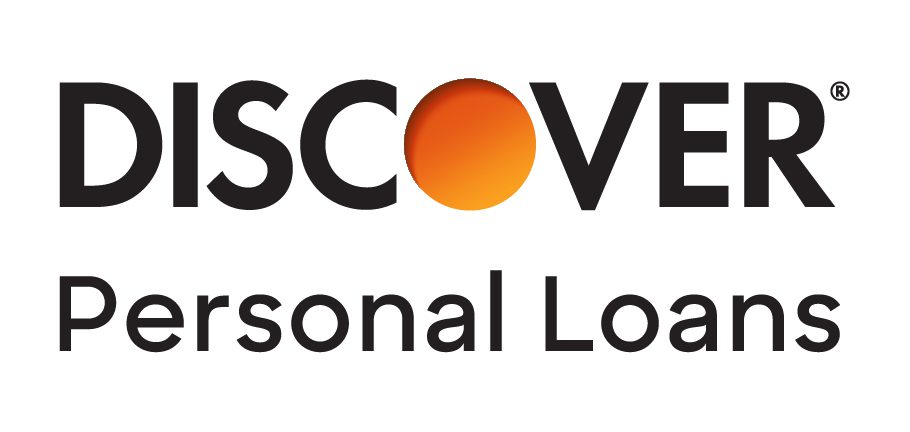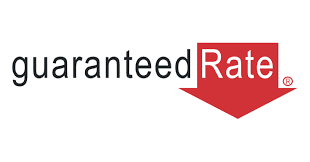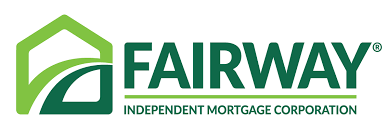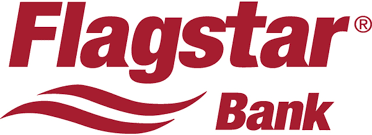Roof Financing Options: What’s Available?
Modified: 1710115200
Updated on:
Unless you have $5K to $10K set aside in an emergency fund for a roof replacement, you’ll need to understand available options for roof financing. The right funding choice depends on whether you’re faced with a sudden water leak or have future plans to replace a roof near the end of its life.
We’ll explain seven financing options to cover your roof repair below.
7 roof financing options to consider
A roof loan is a credit account obtained to fix or replace a roof. However, a roofing contractor loan is the only option that must be used exclusively for roof-related repairs. You can use the other roof financing options listed below for any purpose, such as repairing water damage from a roof leak, while you wait for your homeowners insurance to pay a claim.
The best roof loan for you depends on how urgent your roof repair needs are. The table below provides a quick glance of the roof financing options we’ll cover with a brief pros and cons breakdown.
| Roof financing type | Pros | Cons |
|---|---|---|
| Credit card | ' Quick funding Easy approval | ' High APRs Variable rates Potential transaction fees |
| Personal loan | Quick funding Fixed rates No collateral required | Higher rates than home equity options Shorter terms than home equity options |
| Home equity loan | Lower fixed rates than personal loans Tax-deductible interest | Takes longer to get funds Could lose your home if you default |
| HELOC | Interest-only payments possible Only repay the balance charged | Variable interest rates Could lose your home if you default |
| Cash-out refinance | Lower rates than all other roof financing options Tax-deductible interest | Takes longer to get funds than other home equity products Higher closing costs Could lose your home if you default |
| Renovation loans | Can roll roof repair and mortgage closing costs into the loan amount Lower rates than home equity or personal loans | Higher closing costs More complicated approval process |
| Roof contractor financing | Easy approval with builder lender Interest-free options for good-credit borrowers | Higher interest rates Potential lien on home |
1. Credit card: Quick roof repair cash, but could be expensive over time
If you need money quickly for a serious roof issue and have stellar credit scores, you may qualify for a new credit card with a 12- to 18-month introductory 0% APR. This means you could finance your roof repair interest-free — that is, as long as you pay off the entire balance within the promotional period. Check out local big-box home improvement stores, like Home Depot or Lowe’s, for special financing options to cover your roof expenses.
If your credit is so-so, a credit card should probably be your last resort, unless your roof repair estimate is on the lower end and you can pay off the balance within a year. Average APRs on new cards recently hit 24.37%, according to LendingTree data — the highest APR since LendingTree began tracking rates each month in 2019. That potentially makes them your most expensive roof financing option.
Ask the roofer about transaction fees if you pay with a credit card.
You could be stuck with fees ranging from 1.5% to 3.5% extra, depending on how your roofing company processes credit card payments. For example, you’d end up paying $600 toward the cost of a $20,000 roof if your roofer charges a 3% transaction fee for credit card payments.
2. Personal loan: Fix your roof without the risk of losing your home
A personal loan is disbursed in a lump sum and repaid in fixed-rate monthly installments. You can typically borrow between $1,000 and $100,000, depending on your credit score and the loan term.
If your roof repair needs are urgent, it’s possible to get cash in one business day from a personal loan lender (though the process can take as long as a week, depending on the lender). Another perk: Like a credit card, you won’t have a lien placed on your home or other possessions. That means you won’t lose your home if you fall behind on payments or default.
Personal loans are available with annual percentage rates (APRs) between 6.99% and 36.00%. The best rates go to borrowers with the highest credit scores. One drawback compared to mortgage options: Personal loan interest isn’t tax-deductible.
Compare home improvement loan lenders
| Lenders | User rating | Features | Lender review |
|---|---|---|---|
 |
User Ratings & Reviews
class="PersonalLoanLender--tooltip-trigger-icon" src="https://www.dev.lendingtree.com/content/themes/lt-wp-www-theme/assets/images/info-icon-outline.svg" alt="rating-reviews-tooltip-icon">
Ratings and reviews are from real consumers who have used the lending partner’s services. | APR range: 8.99%-35.99% Loan terms: 36 to 60 months Loan amounts: $2,000-$50,000 | Read our review |
 |
User Ratings & Reviews
class="PersonalLoanLender--tooltip-trigger-icon" src="https://www.dev.lendingtree.com/content/themes/lt-wp-www-theme/assets/images/info-icon-outline.svg" alt="rating-reviews-tooltip-icon">
Ratings and reviews are from real consumers who have used the lending partner’s services. | APR range: 7.99%-24.99% Loan terms: 36 to 84 months Loan amounts: $2,500-$40,000 | Read our review |
| APR range: 7.99%-25.49%* Loan terms: 24 to 144 months Loan amounts: $5,000-$100,000 | Read our review | ||
 | User ratings coming soon | APR range: 7.49%-18.00% Loan terms: Up to 180 months Loan amounts: $25,000 minimum | Read our review |
| APR range: 8.49%-17.99% Loan terms: 12 to 60 months Loan amounts: $600-$50,000 | Read our review | ||
 |
User Ratings & Reviews
class="PersonalLoanLender--tooltip-trigger-icon" src="https://www.dev.lendingtree.com/content/themes/lt-wp-www-theme/assets/images/info-icon-outline.svg" alt="rating-reviews-tooltip-icon">
Ratings and reviews are from real consumers who have used the lending partner’s services. | APR range: 8.99%-25.81%* Loan terms: 24 to 84 months Loan amounts: $5,000-$100,000 | Read our review |
 | APR range: 8.49%-35.99%* Loan terms: 24 to 84 months Loan amounts: $1,000-$50,000 | Read our review | |
 |
User Ratings & Reviews
class="PersonalLoanLender--tooltip-trigger-icon" src="https://www.dev.lendingtree.com/content/themes/lt-wp-www-theme/assets/images/info-icon-outline.svg" alt="rating-reviews-tooltip-icon">
Ratings and reviews are from real consumers who have used the lending partner’s services. | APR range: 8.49%-35.99%* Loan terms: 24 to 84 months Loan amounts: $1,000-$50,000 | Read our review |
*Rate includes autopay discount
3. Home equity loan: Cost effective, but slow to fund
A home equity loan lets you borrow against the equity you’ve built up without replacing your existing first mortgage. If you’re budgeting for an expensive future roof replacement, or plan to upgrade to higher quality materials, a home equity loan gives you the security of a fixed rate and terms as long as 30 years to get you the lowest payment possible.
With a home equity loan, you’ll:
- Pay between 2% and 5% of your loan amount toward closing costs
- Qualify based on your income and credit history
- Need at least a 620 credit score (or higher to get the best home equity loan rates)
- Get a home appraisal to verify your home’s value
- Leave your existing low-rate first mortgage balance alone
- Have two monthly mortgage payments each month
- Risk losing your home if you default and the lender forecloses
An added bonus: Home equity loan interest for a roof replacement or repair is tax-deductible.
The best home equity lenders
| Lender | LendingTree rating and "best of" category | Available features | Lender review |
|---|---|---|---|
 Low credit scores | 680 minimum credit score 90% LTV with higher score $45K minimum draw | Read our review | |
 High LTV ratios | 5- to 30-year terms No-closing-cost options 100% LTV for qualified borrowers | Read our review | |
 Online experience | 5- to 30-year terms $10K to $500K loan amounts 0.25% rate discount for eligible borrowers | Read our review | |
 Rate and closing cost discounts | 5- to 30-year terms 0.50% rate discount for eligible borrowers No upfront fees | Read our review | |
 Fast closings | 5- to 30-year terms $500K maximum loan amount 14-day closings possible | Read our review |
4. Home equity line of credit (HELOC): An option that works like a credit card
A HELOC is a credit line secured by your home that works like a credit card. You can convert your home equity to cash as needed, and make payments only on the balance owed.
Many banks and credit unions offer HELOCs that can be closed in a matter of weeks, which comes in handy if you need your roof repaired sooner than later. If you also bank there and have open checking or savings accounts, the lender may even offer a discounted interest rate. Standard features of HELOCs include:
- Closing costs between 2% to 5% of your line amount, though HELOC lenders often offer no-cost options
- Interest-only payment options during the draw period to keep your payment as low as possible
- Lower rates than personal loans and credit cards
- Faster funding times than home equity loans and cash-out refinances
- Potential you could lose you home if you can’t make the payments and default
The best HELOC lenders of 2023
| Lender | LendingTree rating and "best of" category | Available loan terms | Lender review |
|---|---|---|---|
 High loan amounts | 10-year draw period 20-year repayment period | Read our review | |
 Quick closing | 2- to 5-year draw period 5- to 30-year repayment periods | Read our review | |
 HELOCs with no closing costs | Not disclosed | Read our review | |
 High-LTV HELOCs | 20-year draw period 20-year repayment period | Read our review | |
 Fixed-rate HELOCs | Variable-rate HELOCs: 10-year draw period with a 20-year repayment period Fixed-rate HELOCs: 5- to 30-year repayment periods | Read our review |
5. Cash-out refinance: The lowest rate, but the longest wait for your cash
A cash-out refinance allows you to pay off your current mortgage with a new one at a higher loan amount than you owe. You can then use the cash difference to repair your roof. With this option, you’re spreading the cost of a new roof over your loan term and can write off the interest on the money spent to fix your roof.
Cash-out refinance rates are also typically lower than home equity loan rates, giving you the lowest potential monthly payment of all of the roof financing options. They’re also easier to qualify for — fr example, FHA cash-out refinance lenders may approve you with a score as low as 500.
However, on average, it takes about 47 days to close on a refinance, so it’s not a good choice in an emergency. However, if you’re able to take advantage of lower rates and you’re not in a rush to replace your roof, a cash-out refinance may be worth a look.
Some things to consider about a cash-out refinance:
- In most cases, you can’t borrow more than 80% of your home’s appraised value
- You’ll need to qualify based on your income, credit and assets
- If current rates are lower than what you’re paying on your existing mortgage, you may also save money on your monthly payment
Summary of the best refinance lenders of 2023
| Lender | LendingTree rating and "best of" category | Available features | Lender review |
|---|---|---|---|
 |  Overall refinance products | Minimum credit score: Not published Minimum down payment: 0% to 3.5% Available loan products and programs: Conventional, FHA, VA, jumbo, HELOC, interest-only and renovation loans | Read our review |
 Online mortgage experience for traditional bank | Minimum credit score: Not disclosed Minimum down payment: 0% to 3% Available loan products and programs: Conventional, FHA, VA, jumbo | Read our review | |
 Rate transparency | Minimum credit score: 620 Minimum down payment: 0% to 3.5% Available loan products and programs: Conventional, FHA, VA, jumbo | Read our review | |
 |  Variety of refinance products | Minimum credit score: 580 to 620 Minimum down payment: 0% to 3.5% Available loan products and programs: Conventional, FHA, VA, jumbo, HELOC, interest-only and renovation loans, reverse mortgages, physician loans | Read our review |
6. Home renovation loan: Finance your roof and other upgrades if you’re not in a rush
If your roofing needs aren’t urgent and you want to upgrade the materials or aesthetics of your roof (think tile roof versus asphalt shingle) to improve the value, a renovation loan may be worth a look. Unlike a cash-out refinance, the loan is based on the estimated value of your home after you’ve upgraded the roof. That gives you more borrowing power than a home equity loan, HELOC or cash-out refinance, which are all based on your home’s value “as-is.”
Here’s a quick overview of some common fixer-upper loans:
- FHA 203(k) loan. The government-backed FHA 203(k) renovation loan allows you to add the roofing costs into your loan. Credit score requirements are more lenient (down to 500 with at least 10% equity) than other renovation loan programs, and you may need an approved consultant to help if your roof costs more than $35,000 to repair.
- Fannie Mae HomeStyle® renovation loan. You can finance up to 97% of your home’s value and roll in the roof renovation costs. Your HomeStyle renovation lender approves the roofing contractor and project before the loan closes, and you’ll need at least a 620 credit score to qualify.
7. Roof contractor financing: Worth a look if you need a lender that works directly with roofers
Some roofing companies offer financing plans to cover some or all of your roof repair. The loan options range from revolving credit card accounts to installment loans with fixed rates and payments.
Depending on your credit, roof lenders may offer six months with no payments or interest charges. Before you take a zero-financing deal, compare the total cost to other roofing companies to make sure you’re not paying a “dealer fee.” Your total bill could be up to 10% more to pad the roofer’s pocket since you aren’t paying any interest.
The approval process may be as easy as a phone call, and the lender will work directly with the roofer to pay them for their work. Another plus: You’ll avoid credit card transaction charges since the roof lenders are affiliated with participating roofing contractors.
Ask your roofer about mechanics liens.
Like any building service provider, roofing contractors want to get paid for their work and materials. If you pay them upfront with any of the roof financing options we’ve discussed, there shouldn’t be a reason for them to record a lien on your home. If you plan to pay them after your roof is replaced, check with the roofer about getting a lien release once they’re paid and the work is done. If you forget this step, you may have difficulty refinancing or selling your home until the lien is removed.
5 tips to help you get the best roof financing
You’ve reviewed the roof financing options and understand how they work, but how do you get the best deal on the right option? These five tips may help:
- Shop for the best rates and terms. Whether you’re applying for a credit card or a cash-out refinance, get quotes from at least three to five lenders and compare the options. If you’re dealing with a roof contractor, contact a few other roofers to see what they offer. With mortgages, rates change daily, so ask your loan officer to lock your mortgage rate once you’ve chosen a lender.
- If your roof repairs aren’t urgent, spruce up your credit ahead of time. The lowest rates and best terms always go to borrowers with the highest credit scores, and 780 is the “lowest-rate” benchmark to aim for. Shrink or pay off your credit card debt, don’t apply for multiple types of credit at once and make on-time payments to boost your credit score.
- Check your home’s value for any home equity loan options. Your loan-to-value (LTV) ratio measures how much of your home’s value is borrowed. Most home equity loan and HELOC programs set a maximum 85% LTV ratio, which means you’ll have to leave 15% of your home equity alone. Some high-LTV home equity lenders will let you borrow up to 100% of your home’s value if you qualify.Conventional and FHA cash-out refinance lenders set a maximum 80% LTV ratio. If your military service makes you eligible for a VA cash-out refinance, you can borrow up to 90% of your home’s value.
- Have income documents ready. All of the loan programs listed above require proof of income and employment history. Gather current pay stubs, W-2s and tax returns for a faster approval process.
- Get your home “open house” ready if you need an appraisal. One factor for determining value is an assessment of your home’s “condition,” which means the better it’s maintained, the better LTV ratio will be. A little extra TLC could improve your LTV ratio, and get you a better rate on your roof loan.
How much does it cost to replace a roof?
The average cost to replace a roof is $9,205, according to 2023 data compiled by Angi. However, it can be as low as $5,886 and as high as $12,794 — depending on a number of factors related to your roof’s structure.
Here’s a breakdown* of the things roofers consider when pricing out your roof repair:
Roof size
How much it costs: $4.35 to $11 per square foot
The more square footage a roofer has to repair or replace, the more you’ll spend.
Roof pitch
How much it costs: $1,000 to $3,000 in extra labor
Roof pitch measures how steep your roof’s angle is. Roof workers may need extra safety equipment to replace a steep roof, adding to your total roof repair bill.
Number of stories
How much it costs: More time and labor for each story
A multistory home requires extra time and equipment to transport materials to the roof. You’ll pay significantly more if your home is three stories or taller.
Materials
How much it costs: $2,000 to $4,000 for basic asphalt shingles
There are several different roofing materials to choose from and their costs vary. Asphalt shingles are most common because of their durability in all types of climates and conditions.
Labor
How much it costs: About $2 per square foot
There’s a lot of labor involved in replacing or repairing a roof — on average, about 60% of your total roofing bill is for labor costs. You may pay extra for a steep roof pitch or if your current roofing materials needs to be removed.
Location
How much it costs: Depends on the weather, climate and local housing market
Roof repairs in extreme heat or cold will cost more. Your local climate may require more expensive weather-resistant protection than asphalt shingles offer.
Permits
How much it costs: $100 to $1,000
Your roofer will include the cost of city permits in a roofing bid. If your home is governed by a homeowners association, check with them for any restrictions on the style or color.
Inspections
How much it costs: Varies by location
Some municipal governments require a building inspector’s eyes during the roof repair process, and those fees are passed on to you.
*Cost information based on 2023 data provided by Angi.








